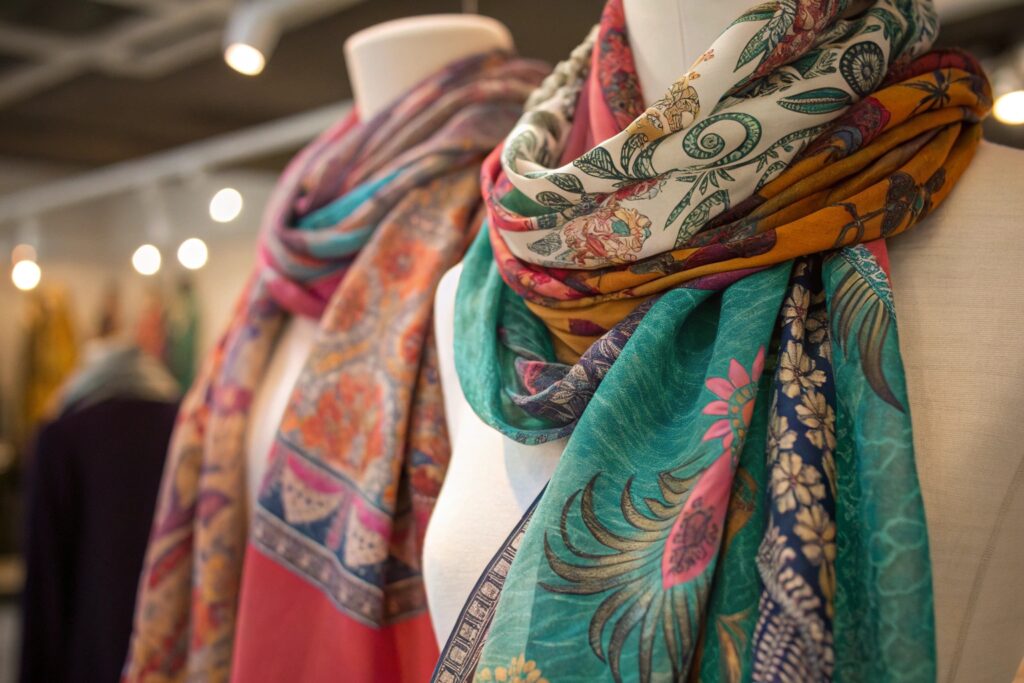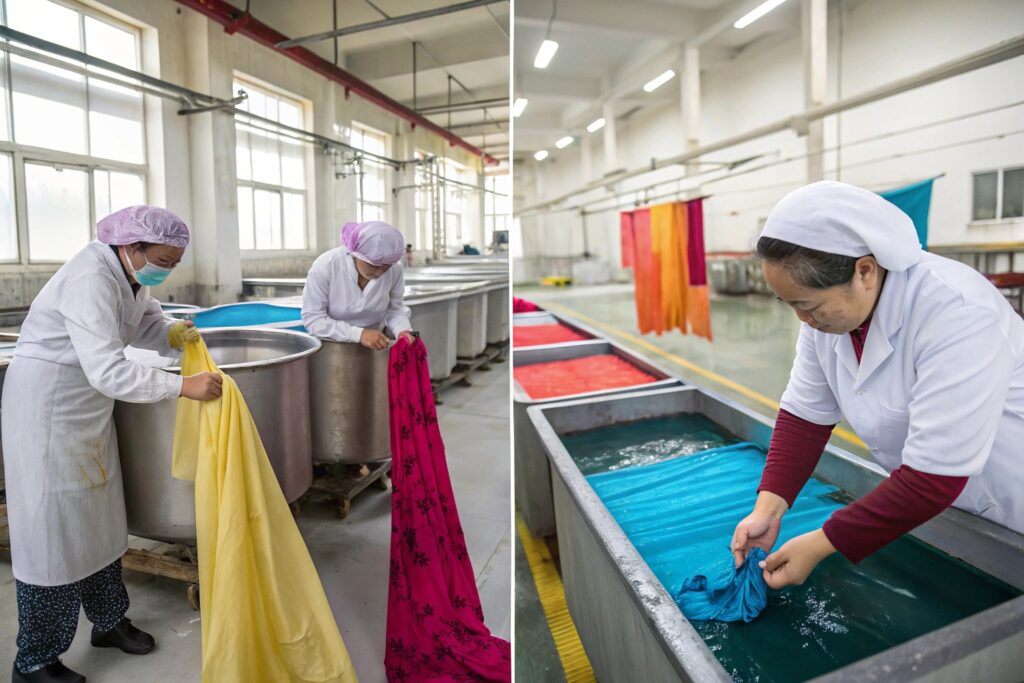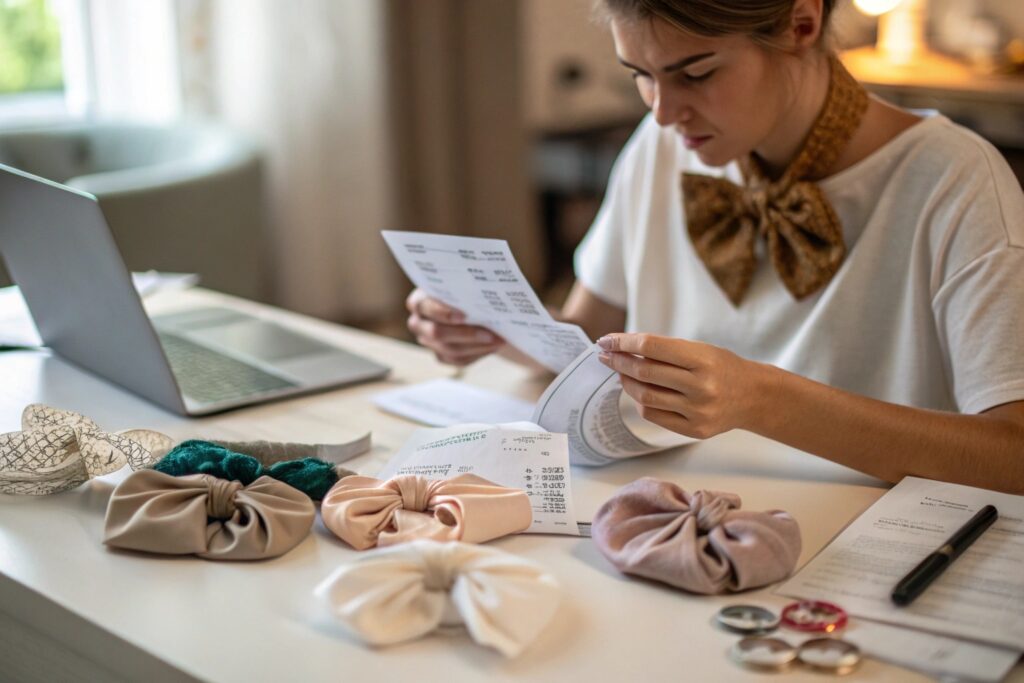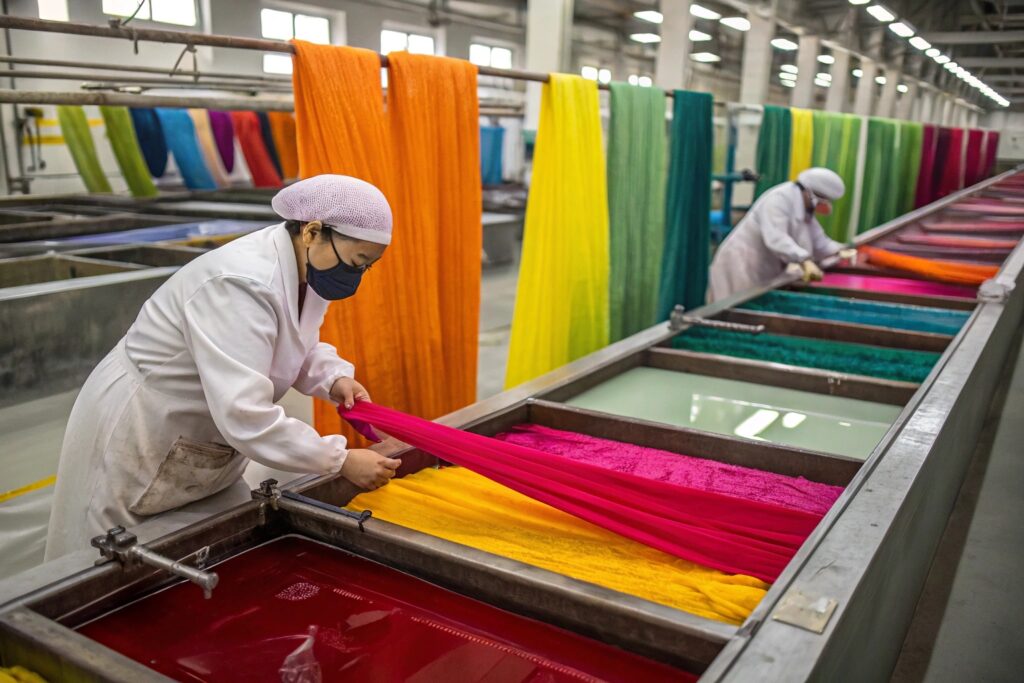Color fading in silk scarves can ruin a customer’s impression, damage your brand reputation, and lead to costly returns. Retailers and e-commerce sellers face increasing demand for vibrant, long-lasting hues that hold up under sunlight, washing, and wear.
By partnering with a manufacturer that offers in-house dyeing capabilities, brands gain greater control over color consistency, durability, and production timelines—all key factors that impact your bottom line.
If you're sourcing silk scarves or running a private-label fashion brand, understanding how in-house dyeing works and why it matters is critical to maintaining product integrity.
Why Is Colorfastness So Important for Silk Accessories?
Silk scarves are prized for their elegance, softness, and luxurious sheen. But their visual appeal hinges on one major factor: color integrity. Customers expect rich, lasting tones, whether they choose classic neutrals or vibrant patterns.
Without proper dyeing control, colors may:
- Fade after the first wash
- Bleed onto clothing
- Appear inconsistent between batches

How Do Buyers Evaluate Colorfastness?
Colorfastness is commonly measured using standards like ISO 105 or AATCC 61. Key aspects tested include:
- Washing resistance
- Lightfastness (UV exposure)
- Rubbing/abrasion
Results are scored from 1 (poor) to 5 (excellent). Brands aiming for premium positioning often demand scores of 4 or higher across categories.
Check international standards via AATCC Testing Methods or refer to ISO Textile Standards.
What Makes Silk More Challenging Than Cotton?
Silk’s protein-based structure is more delicate than plant fibers like cotton. This makes it more reactive to chemical processing and prone to color variation. Only precise dyeing and fixation techniques can ensure high-level colorfastness.
What Are the Steps in In-House Dyeing for Silk?
In-house dyeing isn’t just about dipping fabric in color. It’s a precise process that balances chemistry, timing, and quality control. For silk, the common method is acid dyeing, which bonds well to protein fibers.

Step-by-Step Breakdown:
| Stage | Description |
|---|---|
| Color Lab | Mix pigments, match Pantone codes, test on silk swatches |
| Pre-Treatment | Silk is scoured to remove oils, allowing dye penetration |
| Dyeing | Scarves enter steam-heated vats with acid dyes |
| Fixation | Temperature and pH are adjusted for bonding |
| Washing | Excess dye is rinsed off to avoid bleeding |
| Drying | Scarves are gently air or drum dried |
| QC | Each batch is tested for shade accuracy and fastness |
Want to see examples? Visit How to Dye Silk Properly or Pantone Matching Silk.
What’s the Role of a Color Lab?
The color lab is where science meets aesthetics. Using spectrophotometers, technicians can match a buyer’s exact Pantone reference or digital print file. They also conduct pre-approval testing on a few scarves before mass dyeing begins.
How Does In-House Dyeing Compare to Outsourcing?
Outsourcing dyeing to a third-party facility might seem convenient, but it introduces risks that are difficult to manage—especially for small and mid-sized accessory brands.

In-House Dyeing Benefits:
- Faster lead times (no transport delays)
- Greater color accuracy
- Lower defect rates
- More customization for small batch orders
- Reduced communication missteps
In contrast, outsourced dyeing may result in inconsistent colors across lots, longer cycle times, and less accountability for quality lapses.
Read about centralized production models at Manufacturing Global or dyeing automation trends via Textile World.
Does In-House Dyeing Cost More?
At first glance, yes. But when you factor in the reduced defect rate, faster turnaround, and consistent brand presentation, in-house dyeing often leads to lower total cost of ownership for fashion brands.
Factories with dyeing capabilities also tend to offer package pricing, covering both fabric and finishing in one quote.
What Should Buyers Ask When Sourcing Dyed Silk Scarves?
If color quality is a dealbreaker for your brand, you must ask detailed sourcing questions up front.

Here’s a list to guide your factory interviews:
What to Ask Suppliers:
- Do you conduct dyeing in-house?
- What dye types do you use for silk?
- Can you match Pantone or digital references?
- What’s your process for lab dips and approvals?
- Do you provide ISO or AATCC colorfastness reports?
- Can I get pre-shipment samples?
- How do you handle shade band control in bulk runs?
Where to Find Qualified Manufacturers?
Look for suppliers that highlight in-house dyeing on their websites, Alibaba pages, or trade show booths. Narrow your search by filtering for dyeing capability under “production service.”
Great starting points:
Conclusion
In the world of fashion accessories, color isn't just a design choice—it’s a brand signature. For silk scarves, maintaining vibrant hues and long-term colorfastness is a technical challenge that only well-equipped manufacturers can meet.
By working with factories that offer in-house dyeing, you get tighter control over lead times, better shade matching, and fewer returns due to fading or bleeding. It’s a smart choice for brands that value both quality and speed.
Next time you review scarf samples, ask: “Was this dyed in-house?” The answer may decide whether your brand stands out or fades away.









